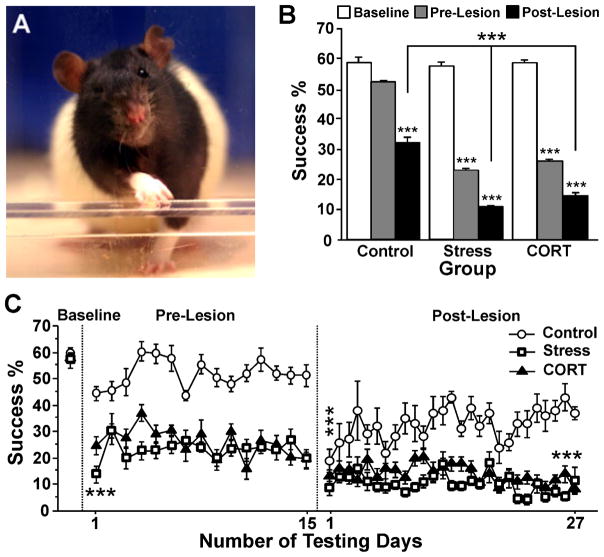Fig. 2.
Skilled reaching task. (A) The apparatus with an opening in the front wall through which animals were required to reach and retrieve food pellets with the forelimb contralateral to the lesion. (B) Mean reaching success in each group during each experimental period. (C) Time course of daily reaching success in control, stress and corticosterone-treated animals prior to the treatment (baseline), during the treatment (15 days of pre-lesion testing) and after unilateral 6-OHDA lesion (27 days of post-lesion testing). Note that both stress and corticosterone reduced reaching success and abolished spontaneous improvement after lesion, although stress rats were most severely affected. Asterisks indicate significant differences: ***P = 0.001. (B) Paired t-test of mean success rate compared with baseline values. (C) Posthoc comparison with control animals on day 1 pre-lesion and day 27 post-lesion, and paired t-test with pre-lesion values on day 1 post-lesion.

